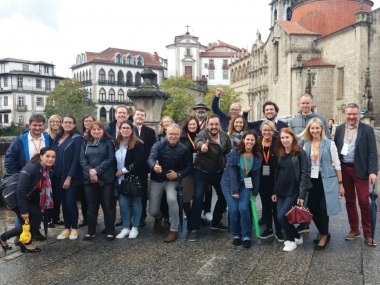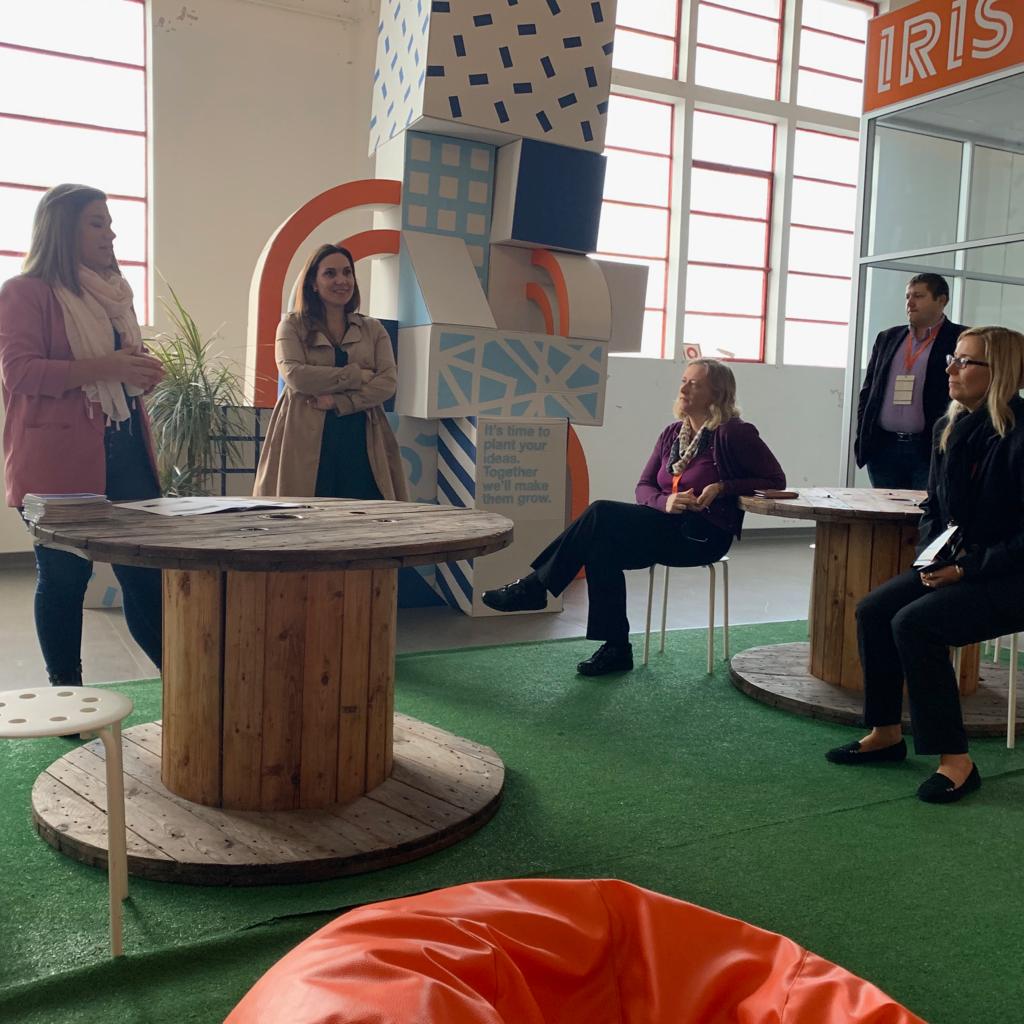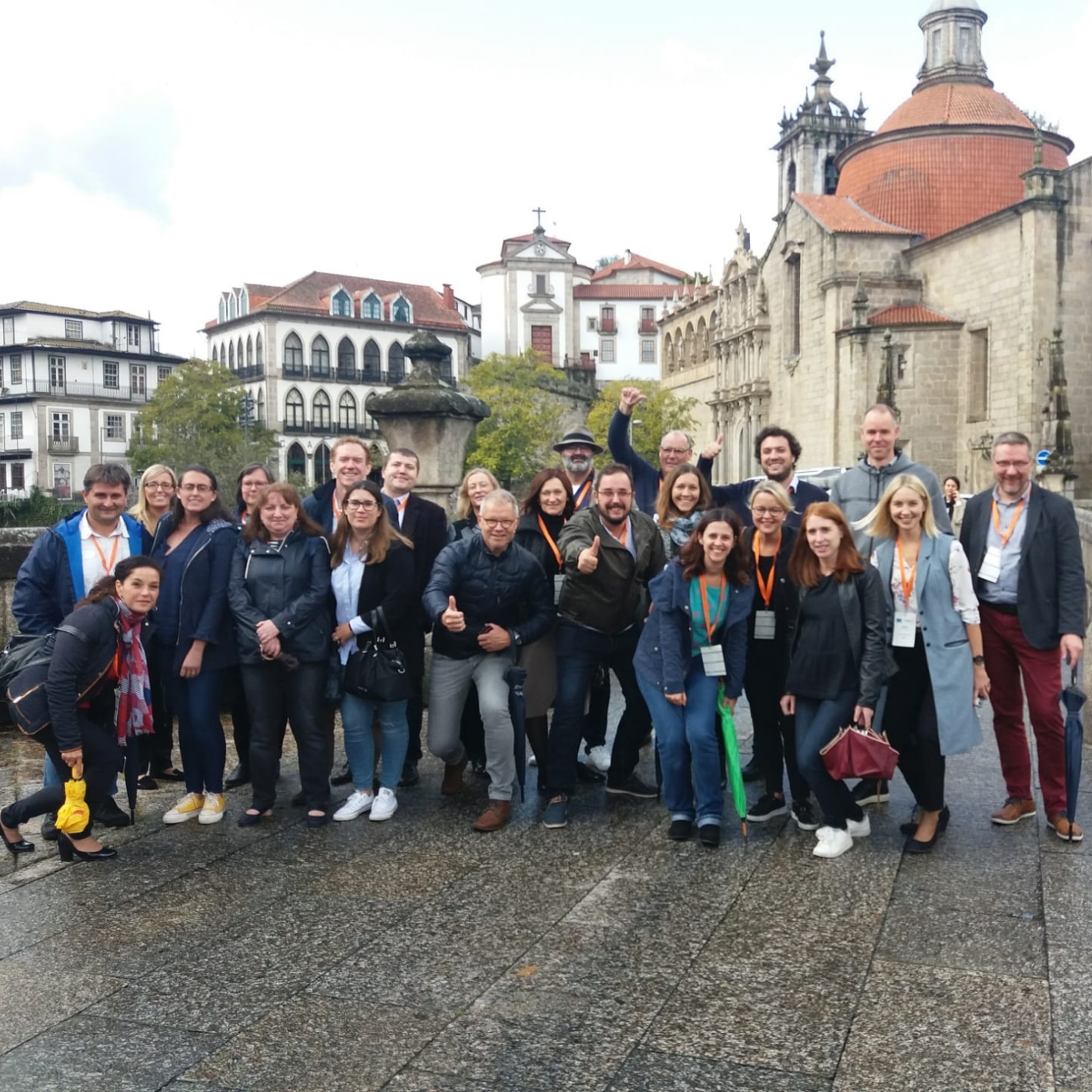Small cities finding their economic niches in a competitive world
Edited on
05 February 2020Can small cities with populations below 100 000, including large towns between 10 000 and 50 000, compete with their larger counterparts for talent and investment?
Are there examples and good practices among partners, and from small cities across Europe, that will inspire new initiatives, which could be examined and explored in the iPlace Project?
All cities compete and collaborate. The URBACT Programme has developed proven methods for cities to work together in well-designed efficient projects to create mechanisms for analysing, learning and planning actions that will initiate integrated and sustainable urban development. Following from their kick-off summit meeting, the partner cities in the iPlace Project are confident that the potential exists for partners to learn and develop new pathways, especially if those pathways include exercises in re-imagining historical sectors that were the mainstays of their local economies in previous eras.

The city of Amarante in Portugal is leading the iPlace Project, which also includes Balbriggan (Ireland), Gabrovo (Bulgaria), Grosseto (Italy), Heerlen (Netherlands), Kočevje (Slovenia), Medina del Campo (Spain), Pärnu (Estonia), Pori (Finland) and Saldus (Latvia). It is a partnership of small cities intent on exchanging their experiences in dealing with their respective challenges, ideas and pathways with the aim to find their niches for sustainable local economic development.
Amarante was the location of a very successful kick-off meeting from 14 to 15 October 2019 where all the partner cities discussed the potentials for the project and became familiar with the URBACT method and the programme requirements. Most of all, partners got to know each other, also, with the help of a good session of karaoke!

Photo 1: Karaoke singing
The focus of the project
Working together as a network during the Development Phase of the project, partner cities are co-creating the stages of a two-year process to deepen understanding of their respective local economic histories and its value for future economic activity.
The expectation is furthermore that the project will add value by giving partners the opportunity to broaden their knowledge of global trends that will impact on their cities, both as disruptions and as new pathways for economic growth. These trends include the radical shift away from economies based on fossil fuel extraction to low carbon economies; the impact of technology in the world of work, specifically the ability to work remotely, together with the growing automation of manufacturing processes and services; as well as the core elements of local ecosystems that enable innovation and support entrepreneurship.
These trends will be contrasted with the existing place experience in each partner city. Are their cities welcoming places for entrepreneurs to start businesses? Is the infrastructure and connectivity in place to enable relocation to their cities? Do their cities have policies and strategies to make them more liveable, walkable and less car dependent? How family friendly are their cities and is their quality of life a selling point? The analysis will empower partner cities to develop actions during the project lifetime that will create an environment for change in existing economic activities and to initiate new activities with clear short, medium and long-term targets in mind.


Photos 2 & 3: Plotting the project during the kick-off meeting
The project will be a unique opportunity for each partner city to make a journey into their industrial past and re-examine possibilities for new economic activity as well as finding synergies between traditional and contemporary technologies. For example, some partner cities have histories of local enterprises in wood and textile industries who were successful in a previous era. Will new skills and insights be matched with such historical local industrial processes that could lead to innovation and the activation of new markets? The possibilities will be explored in the upcoming city visits to be conducted by the lead partner and the lead expert.
The following graph aptly summarises the focus of the project. Delving into the industrial history of the city, mindful of the existing place experience and the imperatives for change that the future holds, partners will seek to find niches for new local economic development.
![]()
What success will mean for the project partners
The success of the project at city level will be evident when each partner city will have produced a robust strategy which will be the product of a process through a number of stages of action development including: an intense place and opportunity analysis using best available tools and techniques; sharing and learning good practices with and from partner cities; creatively engaging local communities and stakeholders in co-creation by exploring ideas, listening to feedback and understanding local challenges; tap into international expertise related to specialist knowledge required for the project made available by URBACT; and experimenting with small actions to test the core actions that will form the foundations of the strategy.

Photo 4: Visit to IRIS, Social Innovation Hub in Amarante
At project level success will be measured in the delivery of a set of coordinated network activities where partner cities will use a series of transnational meetings, hosted in turn by each partner city, to conduct seminars on global trends; to showcase good practices that demonstrate the agility of small cities to be competitive; to jointly train and develop skills and techniques that will build the capacity of partner cities to unlock creative responses in their communities and business groups for addressing local economic challenges; and to utilise the collective knowledge of visiting cities to conduct peer reviews that help host cities to see their challenges and opportunities through ‘fresh’ eyes.

Photo 5: Group photo on the historical bridge in Amarante
In conclusion, the iPlace Project can best be visualised as a journey where the partner cities are fellow travellers who are always seeking to find niches appropriate for their cities, while deepening their understanding of the nuances that make their cities special but also the dimensions that make them similar to others, with the determination to use the knowledge they gained for nesting new ideas that will sprout more sustainable local economic development.
 Submitted by Wessel Badenhorst on
Submitted by Wessel Badenhorst on




